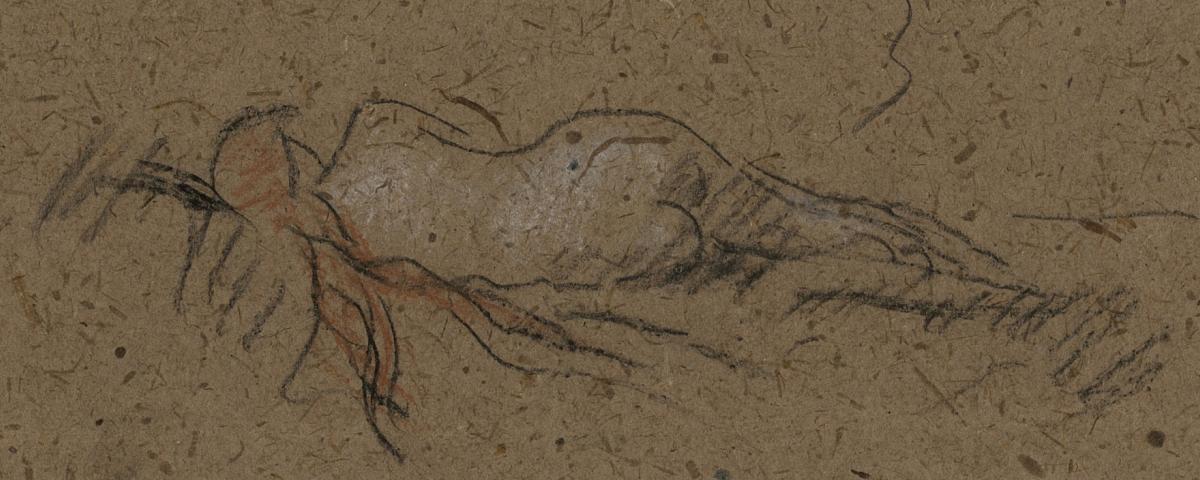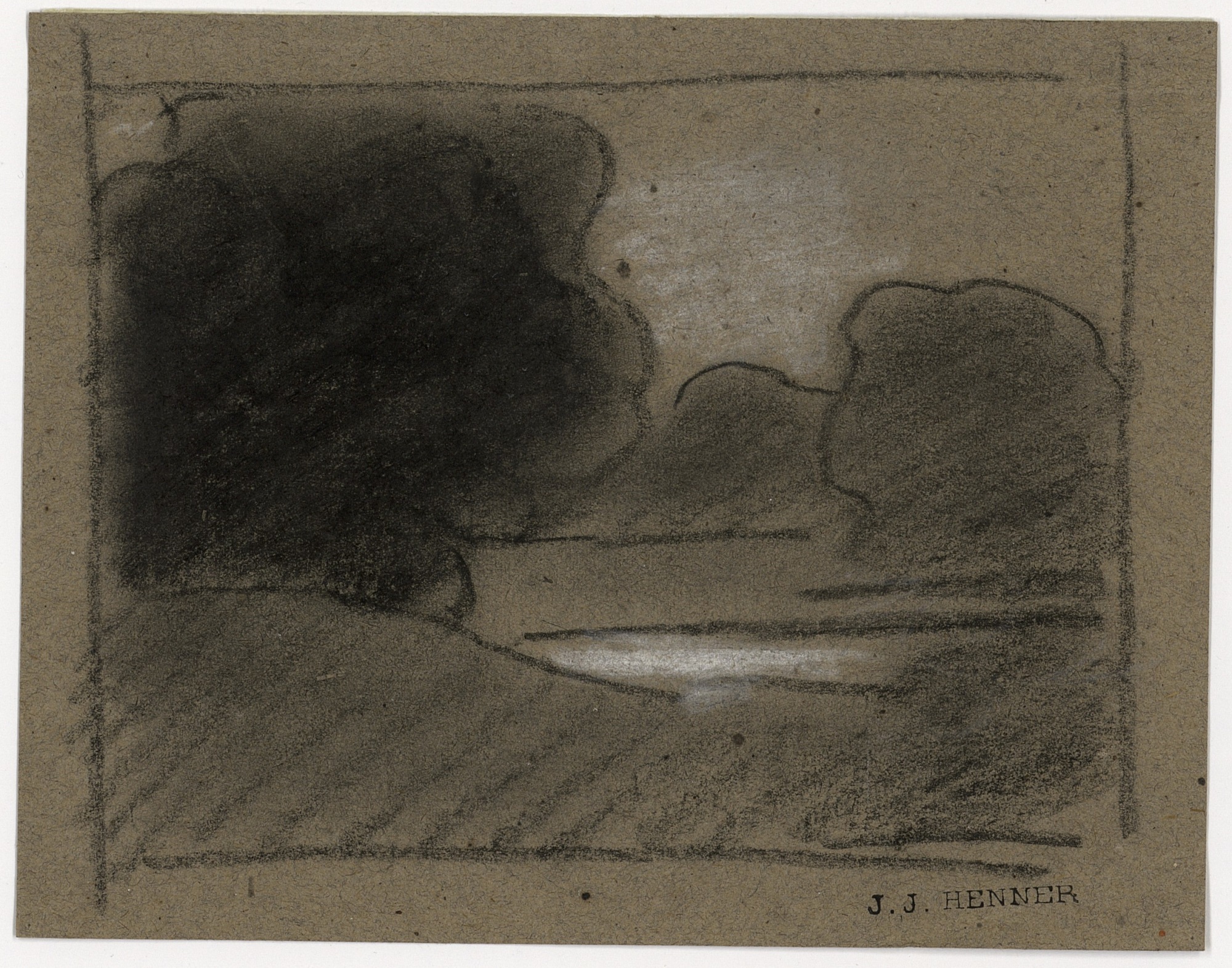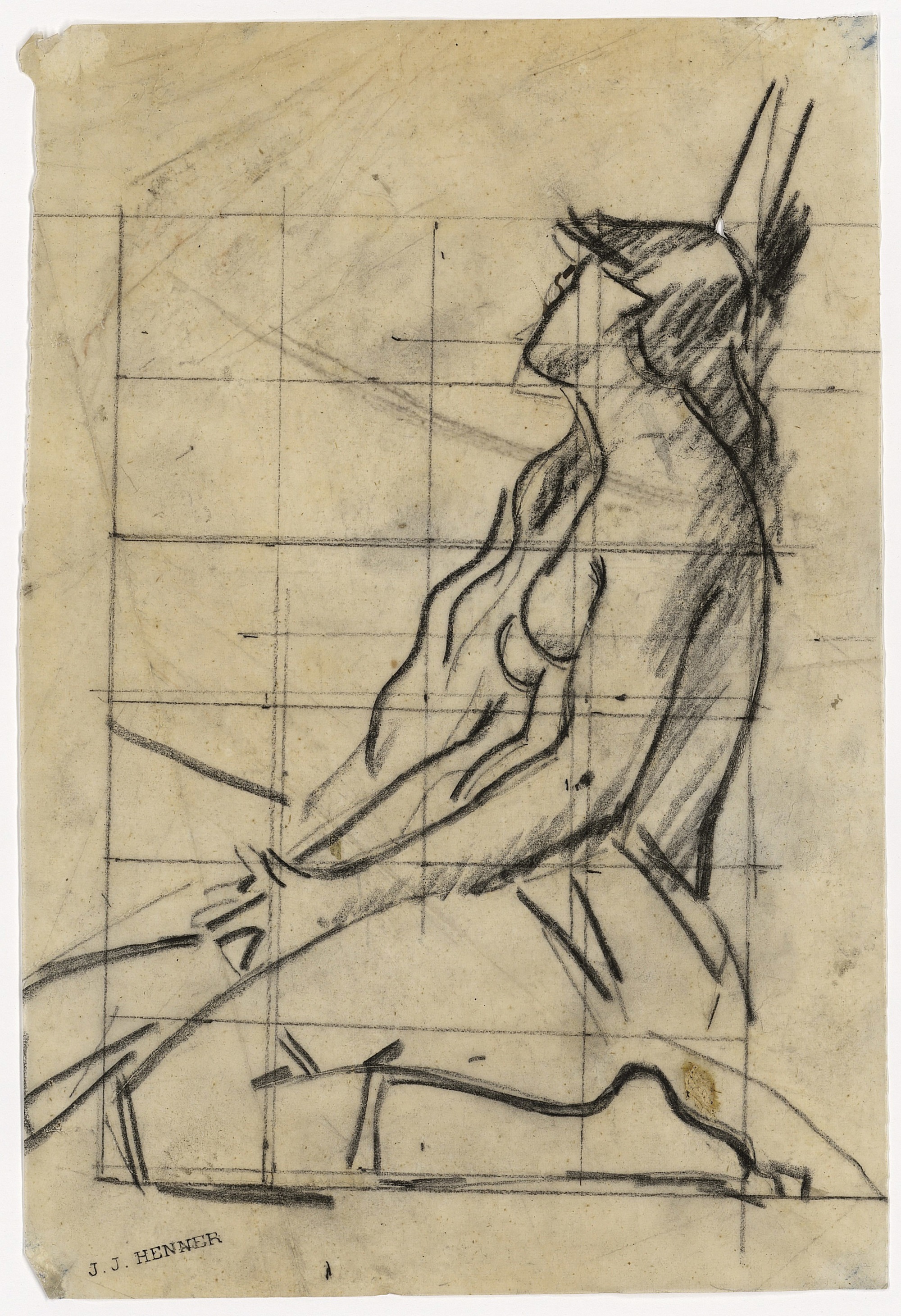
The collection at the Mulhouse Municipal Library offers a diversity which is characteristic of Henner's art of drawing: to begin with, a diversity of subjects (women, nymphs, bathers, portraits, landscapes), as well as a diversity of uses (from quick sketches in charcoal to precise studies in pencil on tracing paper). But there is also a diversity of media, which can be divided into three categories: first of all, there are drawing papers, most often vellum, but also laid paper (whose watermark, figurative or purely typographical, is a sign of the paper-maker's production).
Tracing paper, or transparent paper, was another medium regularly used by Henner for preparatory pencil drawings or, conversely, for studies based on certain paintings, in order to produce a replica or variant.


